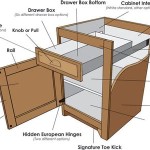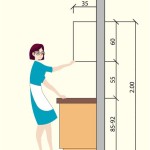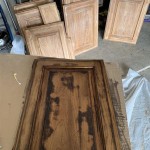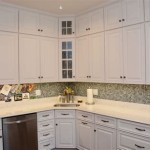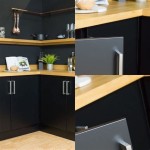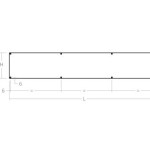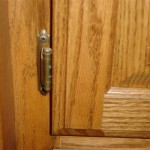Wood Kitchen Vent Hood Designs: A Comprehensive Overview
Kitchen vent hoods are essential appliances that remove smoke, grease, and odors from the cooking area, improving air quality and preventing the buildup of grime on surfaces. While functionality remains paramount, the aesthetic contribution of a vent hood to the overall kitchen design is increasingly significant. Wood kitchen vent hoods, in particular, offer a blend of traditional warmth and modern sophistication, providing a customizable and visually appealing solution for a variety of kitchen styles.
The selection of a wood kitchen vent hood requires careful consideration of several factors, including the type of wood, the hood's style and design, its ventilation capacity, and its integration with existing cabinetry and appliances. A well-chosen vent hood can serve as a focal point, enhancing the kitchen's aesthetic appeal while maintaining functionality and practicality.
Understanding Wood Types and Their Characteristics
The type of wood used in a kitchen vent hood significantly influences its appearance, durability, and cost. Different wood species possess unique grain patterns, colors, and hardness levels, making them suitable for various design preferences and functional requirements.
Hardwoods: Hardwoods, such as maple, oak, cherry, and walnut, are known for their density, durability, and resistance to scratches and dents. These woods typically exhibit finer grain patterns and richer colors, adding a touch of elegance and sophistication to the kitchen. Maple, with its light color and smooth grain, is a versatile choice that can be stained or painted to match any kitchen décor. Oak, known for its prominent grain pattern, offers a more traditional and rustic look. Cherry wood is prized for its reddish-brown hue and smooth, even texture, while walnut boasts a deep, dark color and a luxurious appearance. Hardwoods are generally more expensive than softwoods, reflecting their superior quality and longevity.
Softwoods: Softwoods, such as pine and cedar, are less dense and therefore more susceptible to scratches and dents compared to hardwoods. However, they are often more affordable and easier to work with, making them a popular choice for budget-conscious homeowners. Pine is known for its light color and knotty grain pattern, lending a rustic and informal feel to the kitchen. Cedar, with its distinctive aroma and reddish-brown color, is naturally resistant to moisture and insects, making it a suitable choice for humid environments. While softwoods may not be as durable as hardwoods, they can be treated with protective finishes to enhance their resistance to wear and tear.
Reclaimed Wood: Reclaimed wood, sourced from old barns, factories, and other structures, offers a unique and environmentally friendly option for kitchen vent hoods. Reclaimed wood often exhibits a weathered and distressed appearance, adding character and history to the kitchen. It can also be more durable than newly harvested wood, as it has already undergone years of seasoning and aging. However, reclaimed wood may require careful cleaning and treatment to remove any contaminants or imperfections before it is used in a kitchen vent hood.
Exploring Various Wood Vent Hood Styles and Designs
The design of a wood kitchen vent hood should complement the overall style of the kitchen, whether it is traditional, contemporary, rustic, or transitional. A variety of styles and designs are available, ranging from simple and understated to ornate and elaborate.
Traditional Style: Traditional wood vent hoods often feature intricate carvings, raised panels, and decorative moldings, evoking a sense of timeless elegance and formality. They may be finished with rich stains or paints to enhance the wood's natural grain and color. Traditional vent hoods are typically larger in size and are often paired with custom cabinetry and ornate hardware.
Contemporary Style: Contemporary wood vent hoods emphasize clean lines, minimalist designs, and a focus on functionality. They may feature simple, geometric shapes and smooth, unadorned surfaces. Contemporary vent hoods are often finished with light stains or paints to create a bright and airy feel. They are typically smaller in size and are designed to seamlessly integrate with modern appliances and cabinetry.
Rustic Style: Rustic wood vent hoods celebrate the natural beauty and imperfections of wood. They may feature rough-hewn beams, exposed joinery, and distressed finishes. Rustic vent hoods are often made from reclaimed wood or other natural materials, adding a touch of warmth and character to the kitchen. They are typically larger in size and are designed to be a focal point of the room.
Transitional Style: Transitional wood vent hoods blend elements of traditional and contemporary design, creating a balanced and versatile look. They may feature simple moldings, clean lines, and a neutral color palette. Transitional vent hoods are often finished with a combination of stains and paints, allowing for customization and personalization. They are typically medium in size and can be adapted to suit a variety of kitchen styles.
Beyond standard styles, custom wood vent hoods offer the opportunity to create a truly unique and personalized design. Homeowners can work with designers and craftsmen to create a vent hood that perfectly matches their specific needs and preferences. Custom vent hoods can incorporate unique features, such as integrated lighting, spice racks, or decorative inlays.
Ventilation Capacity and Functionality Considerations
While the aesthetic appeal of a wood kitchen vent hood is important, its ventilation capacity and functionality should be the primary concerns. The vent hood must be capable of effectively removing smoke, grease, and odors from the cooking area to maintain a healthy and comfortable environment.
CFM Rating: The ventilation capacity of a vent hood is measured in cubic feet per minute (CFM). The appropriate CFM rating for a particular kitchen depends on the size of the cooking area, the type of cooking appliances used, and the frequency of cooking. As a general guideline, a vent hood should have a CFM rating of at least 100 CFM per linear foot of cooktop. For example, a 30-inch cooktop would require a vent hood with a CFM rating of at least 250 CFM. For high-BTU cooktops or frequent cooking, a higher CFM rating may be necessary.
Ducting: The ducting system is responsible for removing the smoke and odors from the vent hood and expelling them outside. The ducting should be made of rigid metal and should be as short and straight as possible to maximize airflow. The diameter of the ducting should match the diameter of the vent hood's exhaust outlet. Long or convoluted duct runs can significantly reduce the vent hood's effectiveness.
Filters: Vent hoods use filters to trap grease and other particles, preventing them from entering the ducting system. Filters should be cleaned regularly to maintain optimal performance. Most vent hoods use either mesh filters or baffle filters. Mesh filters are typically made of aluminum or stainless steel and are relatively inexpensive. Baffle filters are more effective at trapping grease and are also easier to clean. Some vent hoods also feature charcoal filters to remove odors.
Noise Level: The noise level of a vent hood is measured in sones. A lower sone rating indicates a quieter vent hood. Vent hoods with high CFM ratings tend to be louder than those with lower CFM ratings. Consider the noise level of the vent hood when making a purchase, especially if you frequently cook or entertain in the kitchen.
Lighting: Most vent hoods include built-in lighting to illuminate the cooking surface. The lighting should be bright enough to provide adequate visibility but not so bright that it creates glare. LED lighting is a popular choice for vent hoods due to its energy efficiency and long lifespan.
Integrating a wood kitchen vent hood into the existing kitchen design requires careful planning and execution. The vent hood should be properly sized and positioned to ensure optimal ventilation. The wood finish should complement the existing cabinetry and appliances. The vent hood should also be installed according to the manufacturer's instructions and local building codes.
Proper maintenance and care are essential to prolong the life of a wood kitchen vent hood. Regular cleaning of the filters and exterior surfaces will help to prevent the buildup of grease and grime. Wood surfaces should be treated with a protective finish to prevent staining and water damage. Avoid using harsh chemicals or abrasive cleaners, as they can damage the wood finish.

How I Built My Diy Farmhouse Vent Hood Cover


48 Wood Range Hood Wilmington Angled Walnut Band Smooth Vent C

Diy Wooden Vent Hood Shanty 2 Chic

Pin On Diy Range Hood

48 Wood Range Hood Charlotte Sloped Classic Moulding Smooth Ve

How I Built My Diy Farmhouse Vent Hood Cover

Wood Range Hoods Under Cabinet Mount Wall And Inserts Kitchen Hood Design

Cabinetry Wood Hoods Omega

Pin On Lake House
Related Posts

